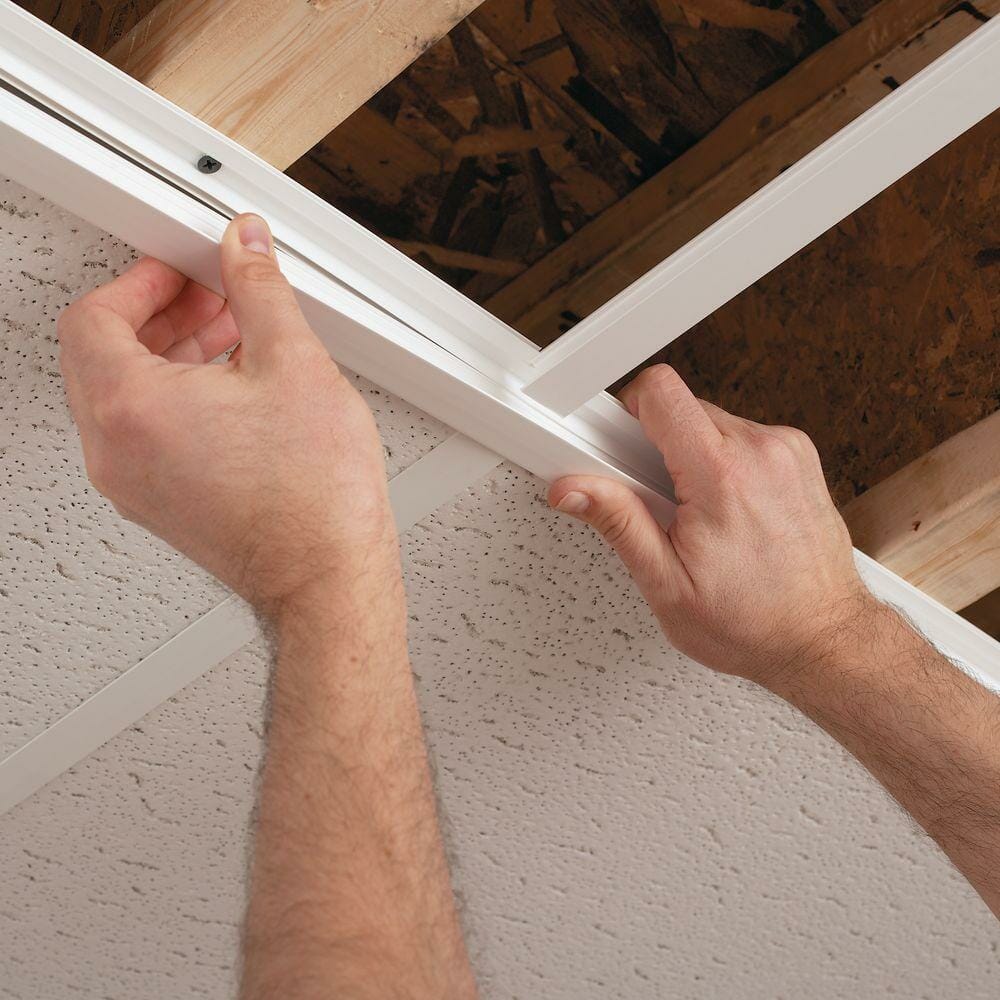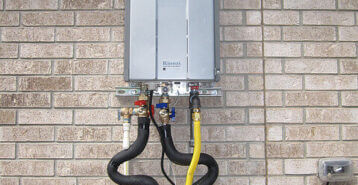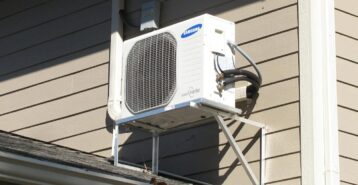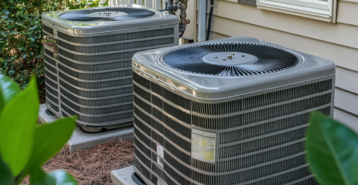Are you doing a home improvement project?
Modernize can pair you with three to four pros in your area, so you can compare options and save time and money.
Looking for a quick way to cover your existing drywall or tile ceiling? A surface-mounted ceiling grid kit, like CeilingMax or CeilingLink, easily covers rusted, stained, or scratched ceiling surfaces without taking up precious overhead space. CeilingMax and CeilingLink both capture the decorative appearance and acoustic ambience of drop ceiling tiles without any demolition or involving a complicated installation process. If that sounds good to you, read on for a rundown of CeilingMax and CeilingLink basics.
Direct Mount Versus Drop Ceilings
Before we can get into the specifications for both the CeilingMax and CeilingLink brands, we need to briefly discuss direct-mount ceilings (also known as surface-mount ceilings) and how they differ from suspended or drop ceilings.
Drop ceilings, the material of choice for offices all around the country, consist of lightweight tiles that are positioned in an aluminum grid system. That grid sits suspended from wires just below the ceiling surface. Many home renovators use them to hide existing flaws in ceilings, since they can be installed without breaking out a sledgehammer and hanging new drywall. Additionally, since the tiles lift up, they can easily be removed to access wires, pipes, and other utilities hidden in the ceiling.
Manufacturers created the direct mount option in reaction to drop ceilings. The two are nearly identical, in fact. They both use lightweight tiles held into place by a grid matrix. However, where drop ceilings hang several inches below the ceiling surface, direct mount systems screw directly into the ceiling joists or rafters above. This makes them much easier to install, since there are no suspension wires to worry about. Additionally, direct mount systems require less clearance than their suspended counterparts. That means they can be installed in areas with low-hanging ceilings, such as over finished basement stairs.
CeilingMax and CeilingLink: Two Popular Direct Mount Brands
As with most home renovation materials, when it comes to direct mount systems, homeowners have plenty of options. In fact, almost any tile made for a drop ceiling system can be used with direct mount grids.
However, within the grid system itself lies the distinction. CeilingMax and CeilingLink produce two of the more commonly installed systems, although CeilingMax is arguably more popular. That’s likely because CeilingMax sells its materials in home improvement stores. However, homeowners and contractors must order CeilingLink directly from their website.
Both companies manufacture the vinyl channels needed to create the grid. However, homeowners looking to install a new ceiling must purchase the panels or ceiling tiles separately from another manufacturer. CeilingMax packages all the materials you’d need to set up the tile grid together—the top hangers, runners, cross tees and wall brackets—and sells them as a kit. Each kit covers around 100 square feet of ceiling space.
CeilingLink, on the other hand, sells each part individually. On one hand, that means you can purchase the exact amount of materials needed to construct your ceiling grid. There’s need to buy a lot of extras if your ceiling measurements don’t divide evenly by 100 square feet. On the other hand, however, it means that you’ll need to perform some calculations yourself to figure out how much of each part you need.
Find the Right Contractor for Your Project
Whether you’re ready to begin your project now or need some expert advice, our network of contractors are here to help. With a few simple questions, we’ll find the best local professionals for you
Weighing the Costs
Homeowners looking to renovate often select surface mounted ceiling grids for the cost benefits. While drywall doesn’t necessarily cost an arm and a leg, it’s a lot for a novice DIYer to take on. And drywall weighs a lot. Every 4 by 8 sheet totals a hefty 57 pounds apiece. On the other hand, homeowners at all different experience levels can install direct mount tiles—and for an attractive price.
CeilingMax and CeilingLink represent two of the more popular brand options available for direct mount systems. While not necessarily interchangeable, they’re both used to the same effect: a lighter, simpler choice for quick ceiling installation.
When it comes to average costs, however, there’s a distinct difference. CeilingLink represents the more economical option, totaling around $0.65 per square foot for 2 by 4 panels, or $0.75 for 2 by 2 panels. On the other hand, you can expect to spend slightly more for CeilingMax—about $1.43 per square foot for a kit compatible with both 2 by 2 or 2 by 4 panels.
Other Differences
CeilingMax and CeilingLink products both have a similar appearance once installed. However, when you put them up, you might notice some notable differences. For instance, homeowners report that CeilingMax is less flexible than CeilingLink, making it a less suitable choice for covering a ceiling that’s not perfectly level.
Meanwhile, CeilingLink’s system purportedly goes up slightly easier. CeilingMax’s pieces snap together, whereas CeilingLink requires the installer to manually drill the parts together using drywall screws.
Overall, homeowners feeling miffed by ceiling installation will welcome the simplicity and ease of direct mount grid systems, no matter which brand they ultimately decide to go with. Ceiling panels offer a low-maintenance solution to traditional drywall—and they’re light enough for even a novice renovator to put up by his or herself.
Find the Right Contractor for Your Project
Whether you’re ready to begin your project now or need some expert advice, our network of contractors are here to help. With a few simple questions, we’ll find the best local professionals for you
Reviews from Real Homeowners
Welcome to Homeowner Resources! We are the Modernize blog. Modernize pairs more than 3 million homeowners a year with pre-vetted contractors in their area. This blog started because we believe homeowners should know everything about their homes, from how their HVAC works to which front door colors they might love. On Homeowner Resources, you can find information on every part of your home, right down to how you can negotiate with contractors to get the best price. Here's more about the blog.
Need a contractor? Learn more about how Modernize finds the right pro for you.





